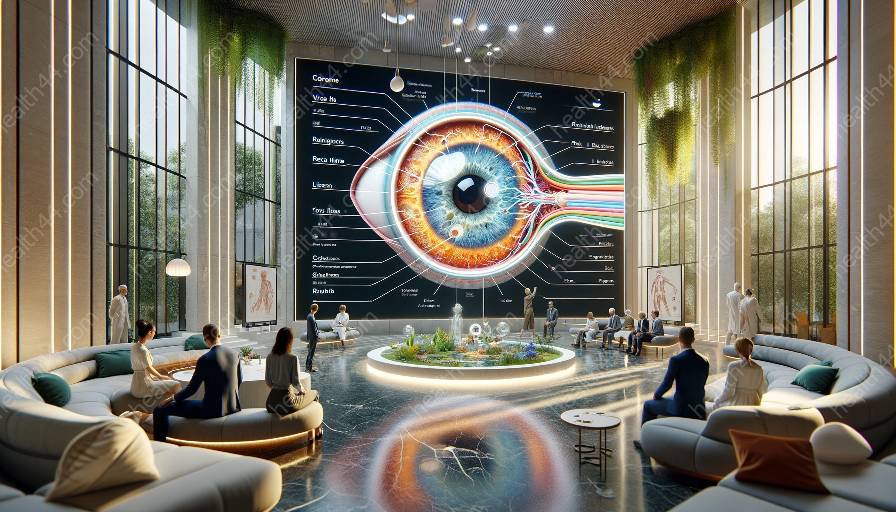The human eye is a complex and remarkable organ with several main parts that enable the sense of vision. Understanding the anatomy of the eye is crucial for maintaining eye health and seeking vision rehabilitation.
Understanding the Main Parts of the Human Eye
The human eye is comprised of several main parts, each serving a specific function in the visual process:
- 1. Cornea: The transparent outer layer of the eye that helps focus light on the retina.
- 2. Iris: The colored part of the eye that controls the amount of light entering the eye by adjusting the size of the pupil.
- 3. Lens: A clear, flexible structure that helps to focus light on the retina for clear vision.
- 4. Retina: The light-sensitive tissue lining the inner surface of the eye, containing photoreceptor cells that convert light into electrical signals for the brain to process.
- 5. Optic Nerve: A bundle of nerve fibers that transmit visual information from the retina to the brain.
- 6. Vitreous Body: A clear gel-like substance that fills the space between the lens and the retina, providing structural support to the eye.
Eye Anatomy and Vision Rehabilitation
Understanding the intricate anatomy of the eye is essential for vision rehabilitation, which aims to improve or restore visual abilities. Vision rehabilitation techniques can help individuals with various eye conditions and impairments to optimize their remaining vision and enhance their quality of life. Some common vision rehabilitation approaches include:
- 1. Low Vision Devices: Using specialized optical aids and devices such as magnifiers, telescopes, or digital magnification systems to improve visual function for individuals with low vision.
- 2. Vision Therapy: A customized program of eye exercises and activities designed to improve visual skills and address specific visual deficits, such as poor eye coordination or reduced focusing ability.
- 3. Assistive Technology: Utilizing tools and technology, such as screen readers, voice recognition software, and tactile markers, to support individuals with visual impairments in accessing information and performing daily tasks.
- 4. Orientation and Mobility Training: Learning techniques for safe and independent travel, including using mobility aids like canes or learning to navigate using auditory cues.
- 5. Environmental Modifications: Adapting living and work environments to optimize lighting, reduce glare, and enhance contrast for individuals with low vision.
Conclusion
By understanding the main parts of the human eye and exploring vision rehabilitation techniques, individuals can gain insights into promoting and preserving their visual health. Embracing a comprehensive approach that encompasses both eye anatomy and vision rehabilitation fosters a deeper appreciation for the complexity of the human eye and the possibilities for enhancing visual well-being.





















